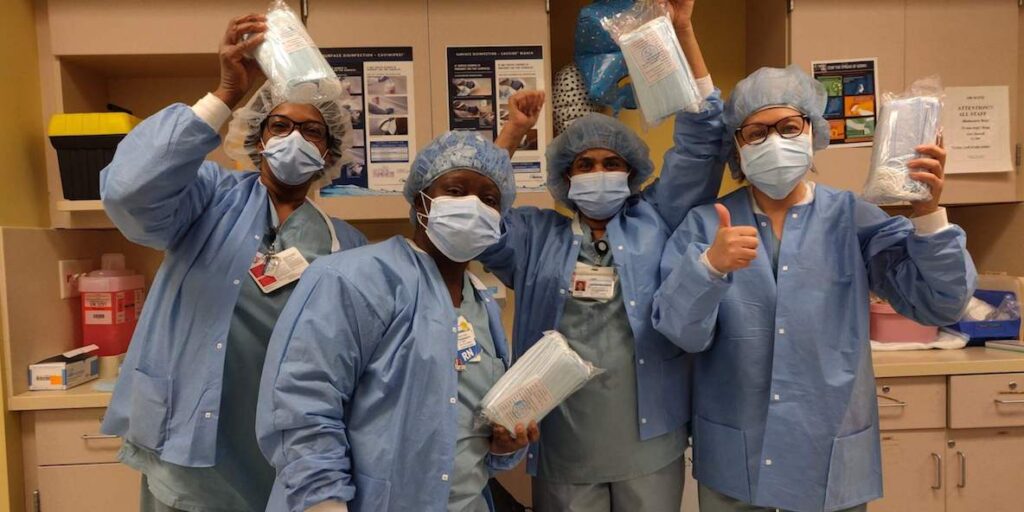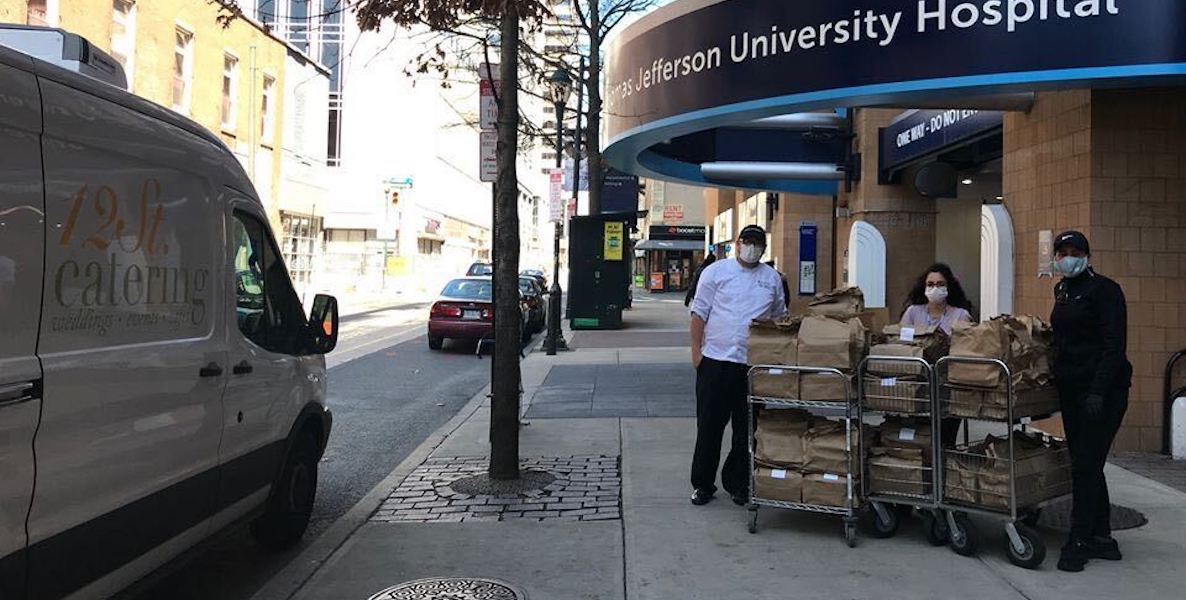When you’re an undergrad at Swarthmore College, where total enrollment hovers at about 1,650, it’s basically impossible not to know your classmates.
“Swarthmore is so small, that even though we weren’t friends, we definitely knew each other and were in the same friend circle,” says alum Emma Ferguson about Colin Schimmelfing, both class of 2010.
![]()
Then, in late March, as the coronavirus began to overwhelm the U.S., they both received a cryptic text from another mutual Swarthmore friend: Join the mask revolution, fight coronavirus!
It was an invitation of sorts, asking those with tech skills to join a team led by two Silicon Valley CEOs, Liz Klinger, the co-founder and CEO of Lioness Health, and Chloe Alpert, CEO of Medinas Health.
The pair had created a rudimentary website called Mask-Match.com. The goal of the site was to pair frontline workers in need of personal protective equipment (PPE) with donors who had masks at their disposal, and were willing to part with them and cover the cost of shipping.
“Sure, I would rather be watching Tiger King,” Schimmelfing says, “but we have this skill, there is a need for it that’s valuable, and so in my mind, we couldn’t turn that away.”
The site was adequate—at first. But as demand surged, so too did the need to find a more sustainable and efficient way to process and vet demands, and pair them with donors.
“Tech thinks it can solve all the problems in the world, and it can’t,” Ferguson says. “But this was a place where actually it can. This was like the winner case where, really, the need is technology.”
So she and Schimmelfing, now an engineering manager, answered the call, joining the leadership team while still working full time at their jobs at Samsara, and Flatiron Health, respectively.
“It really did feel like we had a duty to help,” says Schimmelfing, who’d moved to New York two years ago, and is now hunkered down with his family in Massachusetts.
Since joining the team, their tech prowess has enabled nearly 6,000 donors to send more than 666,000 masks to nearly 7,000 recipients. Of those, 20,000 masks have been received by healthcare workers in Pennsylvania.
To some, the idea of having a surplus of masks just lying around may seem foreign. But in California, where wildfires have been particularly brutal in recent years, stocking your home with masks is akin to having batteries on hand.
“This is maybe a very California thing, but because of the wildfires, everyone I know actually had masks,” Ferguson explains. So too do many California companies, which keep them in supply closets for employees.
We are also a nation of DIYers, of builders and contractors and crafters. “The U.S. is a place where tons of people work on your house or do pretty hardcore DIY work,” Ferguson adds.
Now, as demand for PPE continues, the Swat alums are calling upon Philly to unearth whatever PPE they may have lying around.
“Some of the best sources of trusted masks are those boxes of N95 masks sitting under your workbench,” Schimmelfing says. “If I could ask everyone in Philly to just go and take a second look and also ask their friends elsewhere in the country, hey, can you take a look and see if there’s a box in your home, I think that would be the most helpful.”
They’re also accepting hand-sewn masks which, while not as effective as N95s, are often more comfortable and, therefore, in high demand in places where people are expected to wear them all day: nursing homes, in-patient treatment centers, prisons—all of which have reached out to Mask-Match.com.
Asked if they’re having conversations about the likely need for youth-sized masks for when, and if, schools reopen, Schimmelfing says not yet, but that he could foresee it happening. “Teachers have started thinking about that a lot, and I think that’s probably going to explode as a news story sooner rather than later. But I don’t think everyone’s there yet,” he says.
“We ended up moving to a database, which was very painful but very worthwhile,” Schimmelfing says. Acknowledging the inherent nerdiness of the sentiment, Schimmelfing laughs.
“Sure, I would rather be watching Tiger King, but we have this skill, there is a need for it that’s valuable, and so in my mind, we couldn’t turn that away.”


